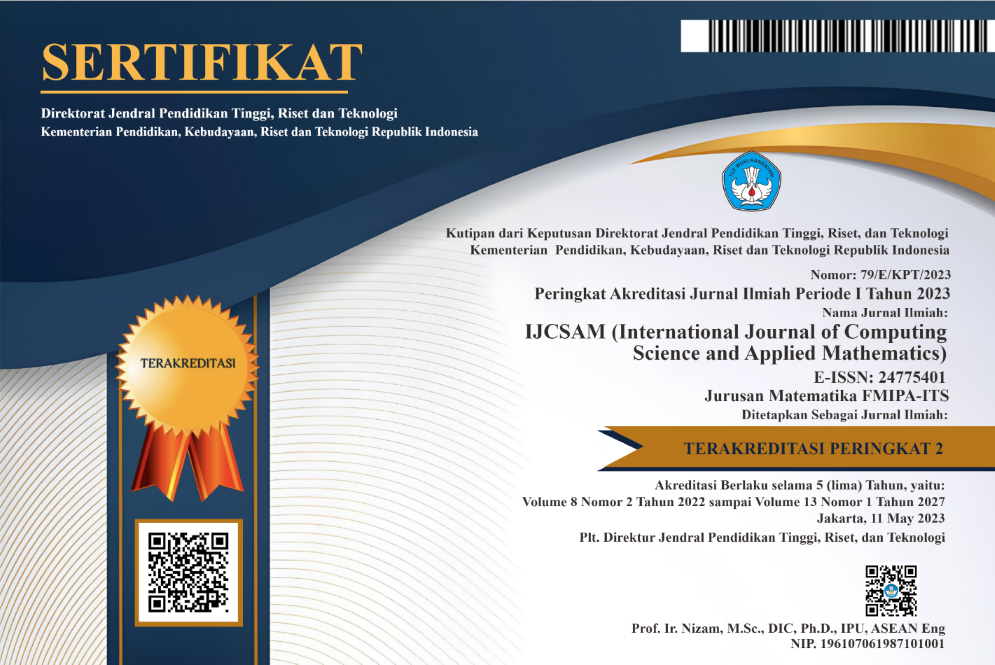Application of Daubechies Wavelet Transformation for Noise Rain Reduction on the Video
Abstract
Keywords
Full Text:
PDFReferences
K. Garg and S. K. Nayar, “Detection and removal of rain from videos,” in Computer Vision and Pattern Recognition, 2004. CVPR 2004. Proceedings of the 2004 IEEE Computer Society Conference on, vol. 1, 2004, pp. I–I.
X. Zhang, H. Li, Y. Qi, W. K. Leow, and T. K. Ng, “Rain removal in video by combining temporal and chromatic properties,” in IEEE International Conference on Multimedia and Expo, 2006, pp. 461–464.
N. Gupta, “Video modeling and noise reduction in the wavelet domain,” Ph.D. dissertation, Concordia University, 2011.
C. Zhen and S. Jihong, “A new algorithm of rain (snow) removal in video.” Journal of Multimedia, vol. 8, no. 2, 2013.
S. G. Mallat, “A theory for multiresolution signal decomposition: the wavelet representation,” IEEE transactions on pattern analysis and machine intelligence, vol. 11, no. 7, pp. 674–693, 1989.
G. Pajares and J. M. De La Cruz, “A wavelet-based image fusion tutorial,” Pattern recognition, vol. 37, no. 9, pp. 1855–1872, 2004.
Z. Zhang and R. S. Blum, “A categorization of multiscaledecomposition-based image fusion schemes with a performance study for a digital camera application,” Proceedings of the IEEE, vol. 87, no. 8, pp. 1315–1326, 1999.
D. L. Donoho and J. M. Johnstone, “Ideal spatial adaptation by wavelet shrinkage,” biometrika, vol. 81, no. 3, pp. 425–455, 1994.
S. G. Chang, B. Yu, and M. Vetterli, “Adaptive wavelet thresholding for image denoising and compression,” IEEE transactions on image processing, vol. 9, no. 9, pp. 1532–1546, 2000.
M. Kaur, K. Sharma, and N. Dhillon, “Image denoising using wavelet thresholding,” International Journal of Engineering and Computer Science, vol. 2, no. 10, 2013.
M. Vranjes, S. Rimac-Drlje, and K. Grgic, “Locally averaged psnr as a simple objective video quality metric,” in 50th International Symposium ELMAR, vol. 1, 2008, pp. 17–20.
DOI: http://dx.doi.org/10.12962%2Fj24775401.v5i1.3549
Refbacks
- There are currently no refbacks.
View My Stats

International Journal of Computing Science and Applied Mathematics by Pusat Publikasi Ilmiah LPPM, Institut Teknologi Sepuluh Nopember is licensed under a Creative Commons Attribution-ShareAlike 4.0 International License.
Based on a work at https://iptek.its.ac.id/index.php/ijcsam.






